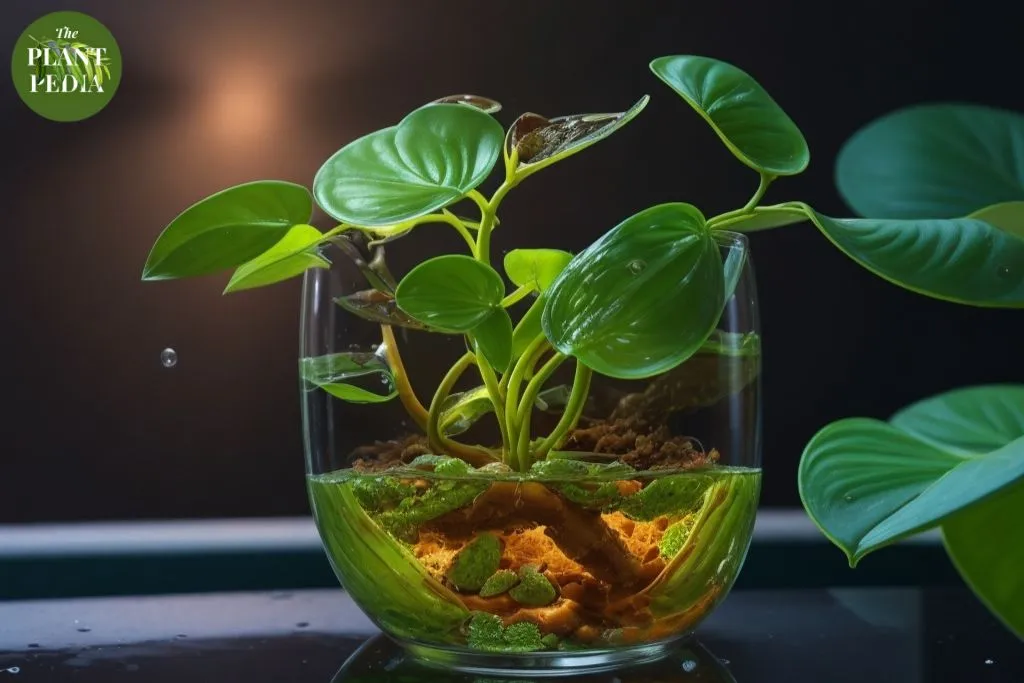The allure of indoor plants has captivated gardening enthusiasts for generations. Among the plethora of options available, the Baby Rubber Plant (Peperomia obtusifolia) stands out as a popular choice due to its vibrant green leaves and low maintenance requirements.
One intriguing question that often arises among plant enthusiasts is whether the Baby Rubber Plant can be permanently grown in water.
In this comprehensive guide, we’ll delve deep into the world of Baby Rubber Plants, exploring their natural habitat, root systems, and the feasibility of water propagation.
Understanding the Baby Rubber Plant
Before we address the prospect of growing a Baby Rubber Plant in water, it’s essential to familiarize ourselves with the plant’s native environment.
Originating from the tropical regions of South America, particularly Brazil, the Baby Rubber Plant thrives in warm and humid conditions.
It has adapted to survive in the dappled light beneath forest canopies, making it well-suited for indoor cultivation.

Can Baby Rubber Plant Grow in Water?
Yes, baby rubber plant (Peperomia obtusifolia) can grow in water. It is a semi-succulent plant that can store water in its leaves, so it can survive for a long time in water. However, it is important to provide the right conditions for the plant to thrive.
Remember, after a long time living in water, they can face nutrient deficiencies.
Read: Peperomia Obtusifolia Propagation in Soil From Leaf & Stem.
The Root System of Baby Rubber Plants
To comprehend the feasibility of water propagation, it’s crucial to grasp the intricacies of a plant’s root system.
In the case of the Baby Rubber Plant, it possesses a relatively shallow root system compared to other plants.
These roots are primarily designed for stability and absorption of nutrients rather than deep penetration into the soil.
Water Propagation: A Viable Option?
Water propagation is a popular method for growing various plants, especially those with the ability to develop roots in aquatic environments.
The process involves placing a cutting or a section of a plant in water, allowing it to develop roots before transplanting it into soil.
Steps for Water Propagation of Baby Rubber Plants
- Selecting a Healthy Cutting: Choose a healthy stem cutting from a mature Baby Rubber Plant. Ensure it’s free from pests and diseases.
- Trimming the Cutting: Using a clean, sharp knife or scissors, trim a section of the stem that is approximately 4-6 inches long. Make sure it has at least one or two leaves.
- Remove Lower Leaves: Gently remove the lower leaves from the cutting, leaving only a few at the top intact.
- Placing in Water: Place the trimmed cutting in a clean container filled with distilled or filtered water. The submerged portion should include the leaf nodes, as this is where roots will emerge.
- Provide Adequate Light: Place the container in a location with indirect sunlight. Avoid exposing the cutting to harsh, direct sunlight.
- Monitor and Change Water: Regularly check the water to ensure it remains clean and clear. Change it every few days to prevent bacterial growth.
- Root Development: Over time, you should observe the emergence of roots from the leaf nodes.
- Transplanting: Once the roots have grown to a sufficient length (usually 1-2 inches), transplant the cutting into a well-draining potting mix.
The Limitations of Permanent Water Cultivation
While water propagation can be successful for Baby Rubber Plants, maintaining them solely in water on a long-term basis presents certain challenges.
Nutrient Deficiency:
Water lacks the essential nutrients that soil provides. While Baby Rubber Plants can initially survive in water, they may eventually face nutrient deficiencies, leading to stunted growth and overall health decline.
Lack of Stability:
Without the support of soil, Baby Rubber Plants may struggle to establish a stable base, which can result in difficulties in achieving an upright growth pattern.
Potential Rot Issues:
Constant exposure to water increases the risk of overhydration and root rot. This is particularly true if the water isn’t changed regularly or if the container lacks proper drainage.
My Additional Tips for Growing Baby Rubber Plants in Water:
- Use filtered or distilled water. Tap water can contain chlorine and other chemicals that can harm the plant.
- Keep the water level just below the nodes of the cutting.
- Place the container in a warm spot out of direct sunlight.
- Fertilize the plant every month with a diluted liquid fertilizer.
- Once the roots have developed, transplant the cutting into a well-draining potting mix.
Related FAQs:
Can baby rubber plant grow in water permanently?
While Baby Rubber Plants can be propagated in water successfully, they are not well-suited for long-term growth in water.
Eventually, they will face nutrient deficiencies and stability issues, making it essential to transplant them into soil.
How long does it take for a Baby Rubber Plant cutting to develop roots in water?
Typically, it takes about 2-6 weeks for roots to develop from a Baby Rubber Plant cutting placed in water. Factors like temperature, light, and the health of the cutting can influence the speed of root growth.
What type of water should be used for propagating Baby Rubber Plants?
Using distilled or filtered water is recommended for propagating Baby Rubber Plants in water. Tap water may contain minerals or chemicals that could potentially harm the plant.
How often should I change the water for my Baby Rubber Plant cutting?
It’s advisable to change the water every few days to prevent the growth of harmful bacteria and ensure that the plant has access to clean, oxygenated water.
Can I use rooting hormone when propagating a Baby Rubber Plant in water?
Using a rooting hormone is optional but can potentially speed up the root development process. It’s essential to use a rooting hormone that is suitable for water propagation.
What should I do once roots have developed in water?
Once the roots of the Baby Rubber Plant cutting have grown to a sufficient length (usually 1-2 inches), it’s time to transplant it into a well-draining potting mix. Be gentle when handling the delicate roots.
What are the signs that my Baby Rubber Plant cutting is not thriving in water?
Signs of a struggling Baby Rubber Plant cutting in water include yellowing or wilting leaves, a lack of root development after an extended period, and a foul odor emanating from the water.
Can I grow a Baby Rubber Plant solely in a hydroponic setup?
While hydroponics can be used to grow a wide variety of plants, Baby Rubber Plants are not ideally suited for this method. They are better adapted to soil-based growth.
How can I transition my Baby Rubber Plant from water to soil successfully?
When transitioning a Baby Rubber Plant from water to soil, choose a well-draining potting mix and ensure the new container has drainage holes.
Gently remove the plant from the water, being careful not to damage the roots, and plant it in the soil.
What care tips should I keep in mind for a Baby Rubber Plant after transitioning it to soil?
After transplanting, place the Baby Rubber Plant in an area with indirect sunlight, and water it sparingly. Allow the top inch of soil to dry out before watering again.
Monitor the plant for signs of growth and adjust care accordingly.
Conclusion: Striking a Balance
In conclusion, while it’s possible to propagate a Baby Rubber Plant in water, maintaining it permanently in a water environment poses challenges related to nutrient deficiency, stability, and potential rot issues.
To strike a balance, consider transitioning the rooted cutting into a well-draining soil mixture once roots have sufficiently developed.
By understanding the needs and limitations of the Baby Rubber Plant, you can create an environment that fosters healthy growth, ensuring you enjoy the beauty of this captivating plant for years to come.
Happy gardening!
